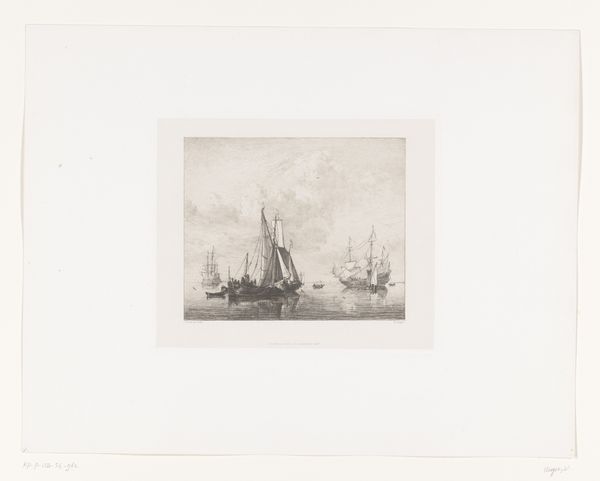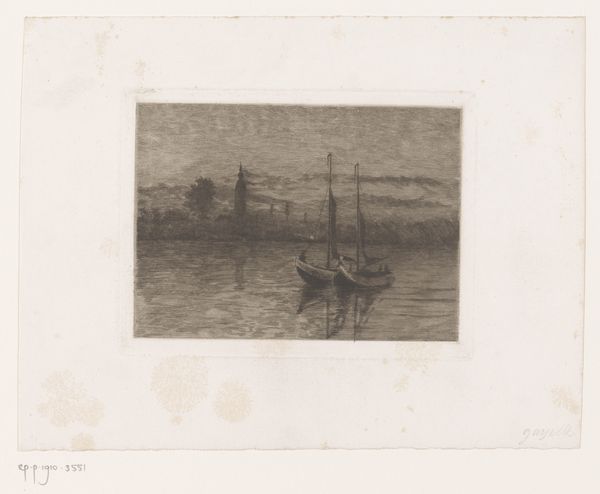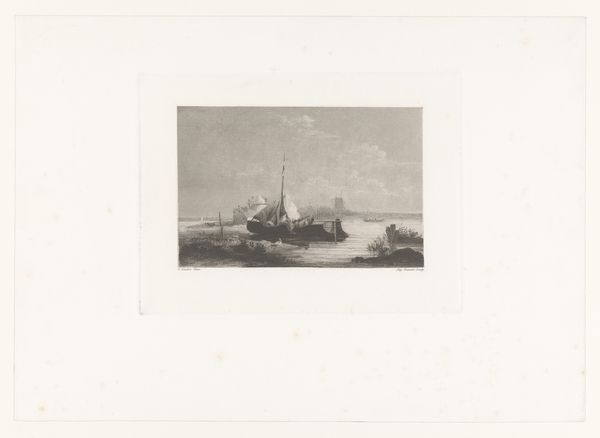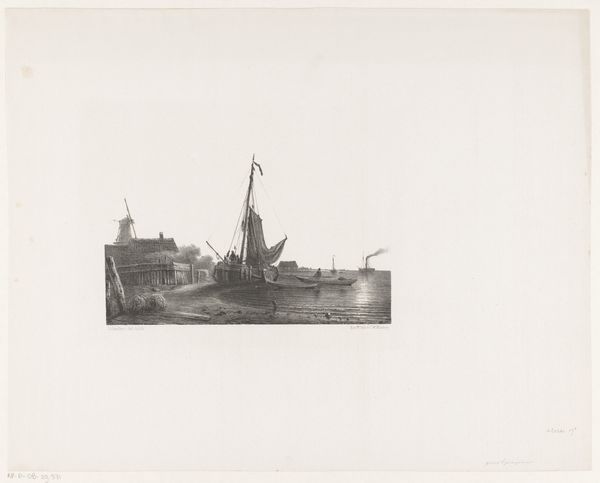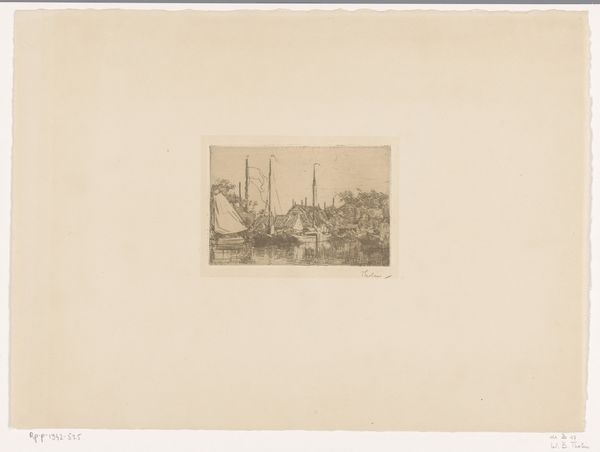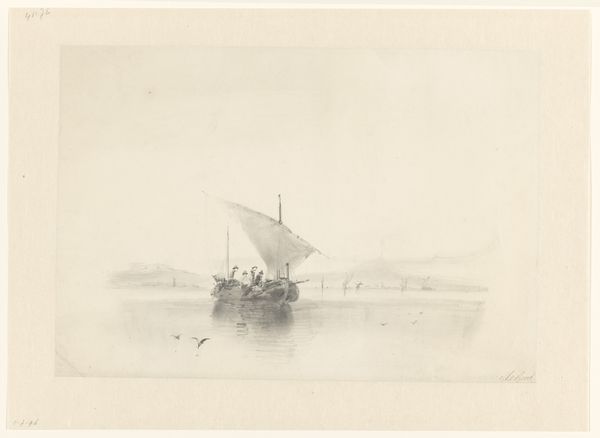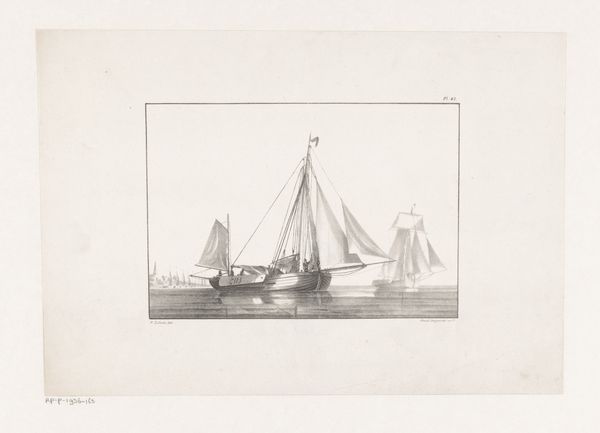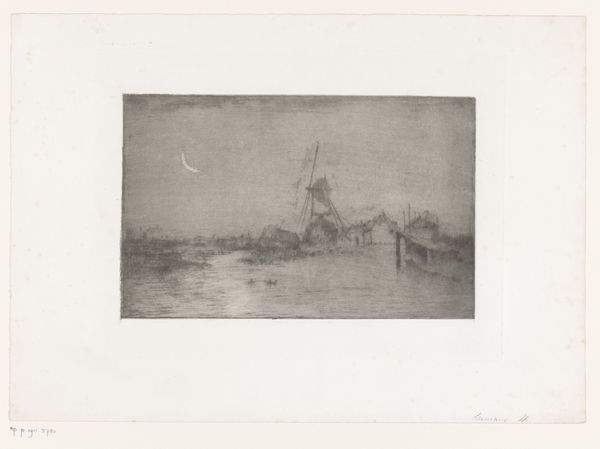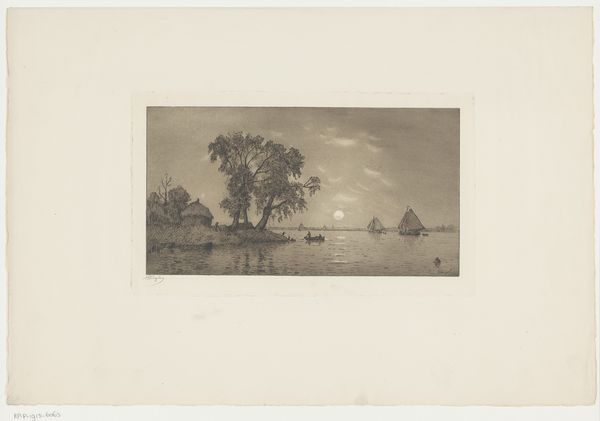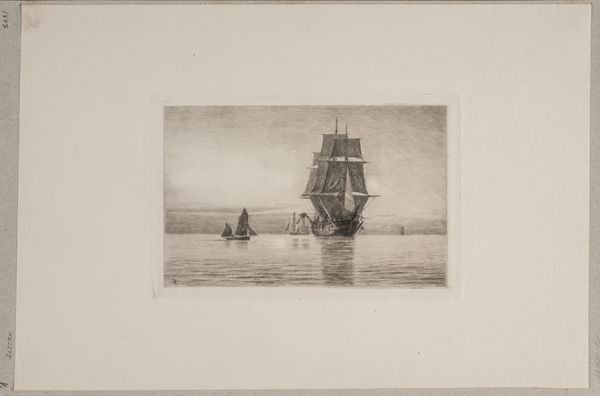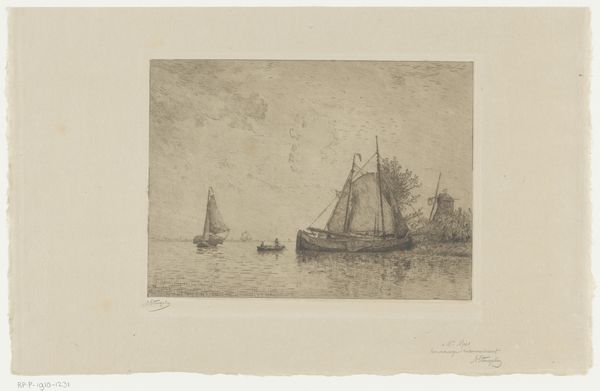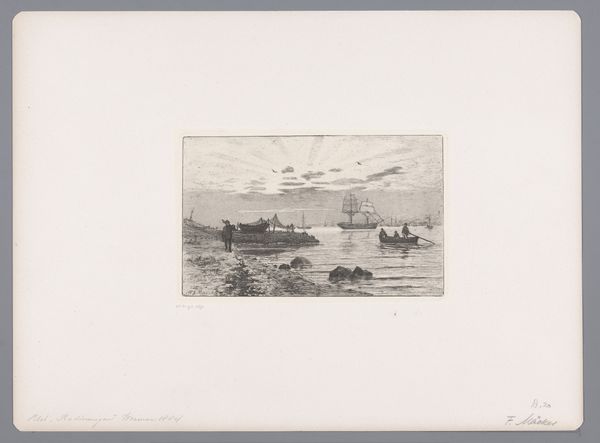
Zeilschepen bij een kade bij ondergaande zon 1847 - 1863
0:00
0:00
fransarnoldbreuhausdegroot
Rijksmuseum
#
white colour balance
#
rhythmical white colour
#
shape in negative space
#
natural shape and form
#
negative space
#
natural tone
#
white dominant colour
#
repetition of white
#
repetition of white colour
#
remaining negative space
Dimensions: height 270 mm, width 365 mm
Copyright: Rijks Museum: Open Domain
Frans Arnold Breuhaus de Groot made this print of sailing ships near a quay at sunset sometime in the mid-19th century. It’s an etching, meaning that the artist used acid to bite lines into a metal plate, which was then inked and printed. Consider how this process enabled the image to be reproduced, a far cry from painting, which yields only one original. Here, the artist is not so much creating an original image, as overseeing its multiplication. The material qualities of the print – its reproducible nature, its relative affordability – reflect the increasing industrialization of image-making during this period. The very subject of the work – ships at port – speaks to an international trading network that was rapidly expanding at the time. This print isn't just an aesthetic object, but a document of its time, deeply intertwined with the rise of capitalism and global exchange. It challenges us to think about art not just as individual expression, but as part of a much larger social and economic picture.
Comments
No comments
Be the first to comment and join the conversation on the ultimate creative platform.
